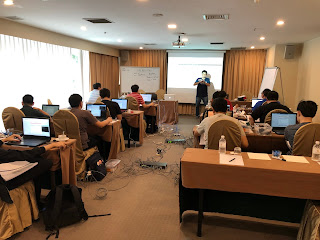
In December 2017, I decided to build my very own Ethereum Mining Rig. With the sky rocketing prices of Ethereum, I have made some quick calculations that a mining rig can reap a good amount of passive income.
To begin with building a mining rig, you will first have to fork out a certain sum of money to invest in a mining rig. In Singapore, there are various online websites that sell custom mining rigs to keen crypto currency miners. However, their prices are rather expensive and you could get components with better specifications if you sourced for your own components with the same amount of money. So that was what I did! I took a trip down to Sim Lim Square, which you might have heard of, is a computer geek's paradise. They sell you any computer hardware under the sun that you could think of!
For a mining rig that mines Ethereum, the most important component is the Graphical Processing Unit (GPU). The GPU does all the complex mathematical computing or generally known as "mining" and it determines how much money you can make in a day. For the rest of the computer components, such as the CPU, RAM or hard disk, they don't really make significant improvements in mining as compared to the GPU, therefore it is okay to use an older system, or any system you might have laying on your shelf. However, if you want to build a mining rig with 1 or more GPU, you might have to look into a newer motherboard or specialised mining motherboards that accept 6 or more GPUs. I know of a mining motherboard that accepts 19 GPUs (THAT'S CRAZYYYYY!!!) Personally, I do have an old motherboard laying on my shelf, but after much testing, it could only support up to 2 GPU.
In this rig that I'm building, I'm looking to build a mining rig that can support up to 6 GPUs.
 My Ethereum Mining Rig Parts
My Ethereum Mining Rig Parts
1) 850W 80-Plus Gold Seasonic Power Supply Unit
2) Biostar TC250-BTC Pro Motherboard
3) Intel Pentium G4400 Processor
4) 4GB Crucial DDR4 Memory
5) 3x GPU Risers
6) 2x Sapphire RX570 Nitro+ 8GB
7) 1x Sapphire RX570 Nitro+ 4GB
8) Cheap Hand-built Mining Frame from Daiso
Challenges Faced
1)
Insufficient Supply and Increasing Costs of GPUs in the Market
Due to the crazy popular demand of building mining rigs, GPUs are usually out of stock in Sim Lim Square, and even if you are lucky to find one, their prices are usually very expensive due to markups from the high demand. An actual fact, a Sapphire RX570 Nitro+ 8GB card that I've bought on 16 Dec 2017 cost me SGD $409 and today (23 Jan 2018), the price of the card from the same store I got it from cost SGD $640! An increase of 56% over a month is insane!!! However, I was quick to get my hands on 3 GPUs in the first week before the price increased.
2)
GPU modding and Overclocking
When I started off building this mining rig, I had zero knowledge on tweaking the GPU to maximise the mining performance. I don't even know that tweaking the GPU was necessary until I ran my miners with stock settings. Poof! I was getting 19MH/s for each of my card! With a quick research online, my card can do 28 MH/s with the correct tweaking and overclocking. So I spent my entire week at home trying to tweak the BIOS clock speeds of the card and having trial and errors with the overclocking so that my rig runs stable at high hash rates and does not crash. After a painstaking week, my rig is now running at 80.5 MH/s on average and each card produces around 27 MH/s without any crashes for the past month. At the same time, there is another important process which is undervolting. Undervolting allows you to reduce the power draw of your GPUs, significantly reduce your monthly electrical bill by a fair bit.
Cons of Running a Mining Rig
In Singapore when the temperature is around 30 deg celcius all year round, running a mining rig that generates a lot of heat is not really a good idea after all. I host my mining rig in my study room for the past one month and I placed it on a table right beside my window. Since I don't leave my windows open at night when I sleep, the heat is trapped in the room for the entire night and the next morning, my room feels like a sauna. The air in the room is legit warm. So I have to open the window and blast my fan in the room for a while so that it could dissipate the heat trapped in the room. The ideal place to host a mining rig is in an air con environment so that it could cool down your rig.
Statistics of my Rig
Hashrate: 80.5 MH/s (avg)
Earnings per day : $10.69 (1 ETH = SGD $1387 as of 25 Jan 2018)
Power Consumption: 485W (avg)
Electrical Cost per day (24 hours) : SGD $2.51 (21.56 cents per kWh tariff)
Profit: $8.18 a day
Miner: Claymore Miner
Mining Pool: Ethermine (Asia)
Again, the profit is determined by the price of Ethereum and the mining difficulty of mining.
* All prices mentioned in this post are in Singapore Dollars (SGD)













